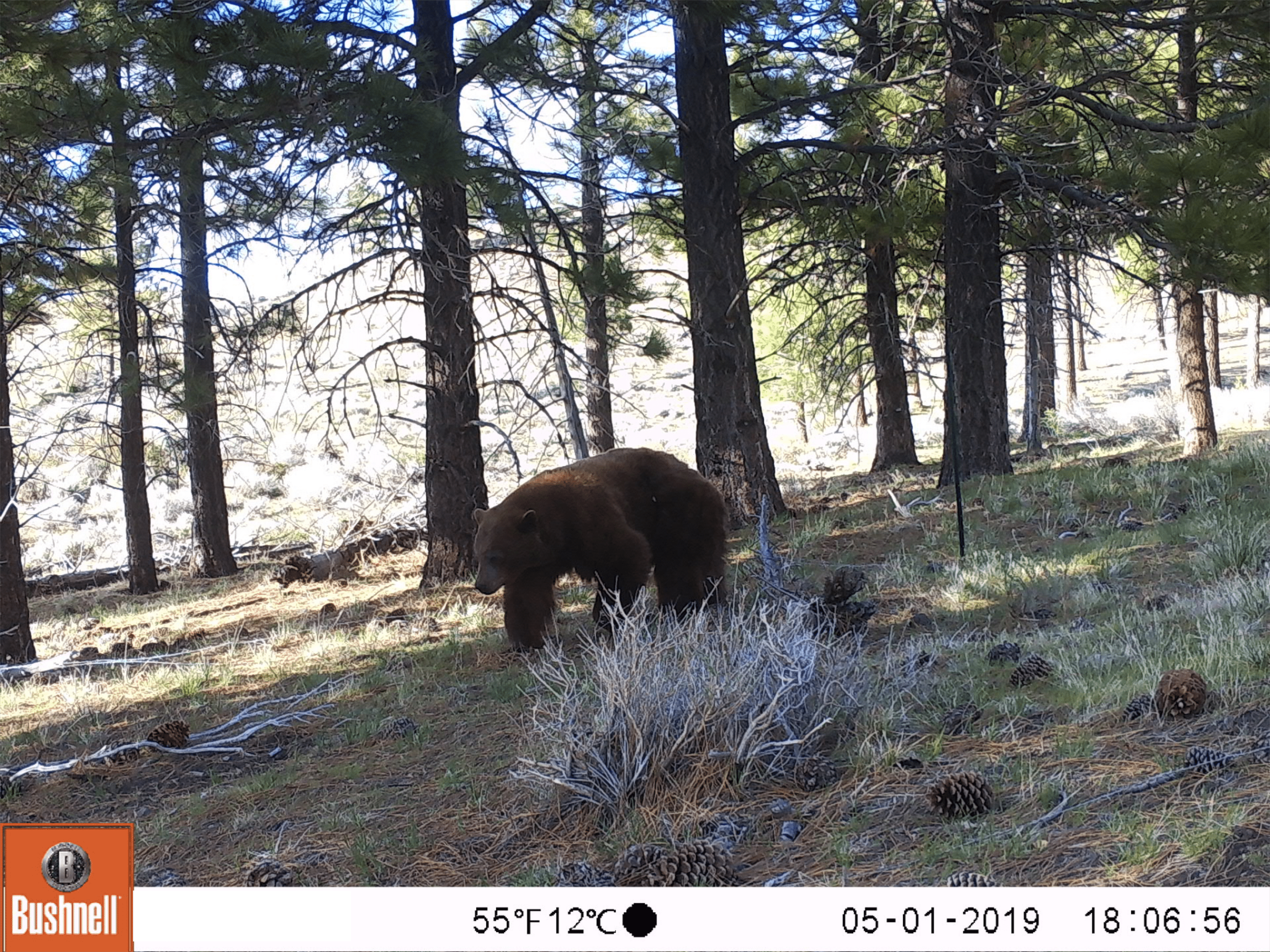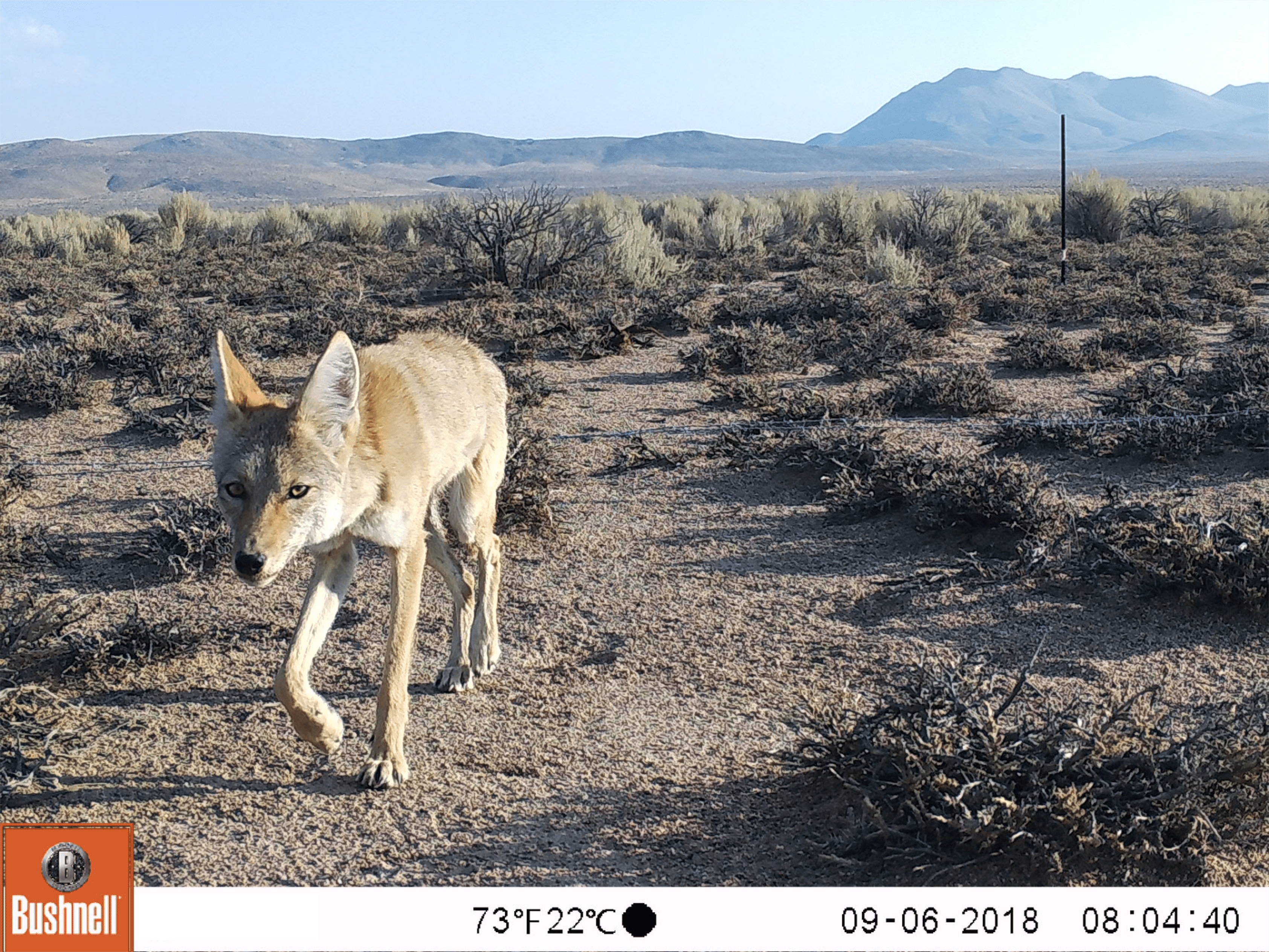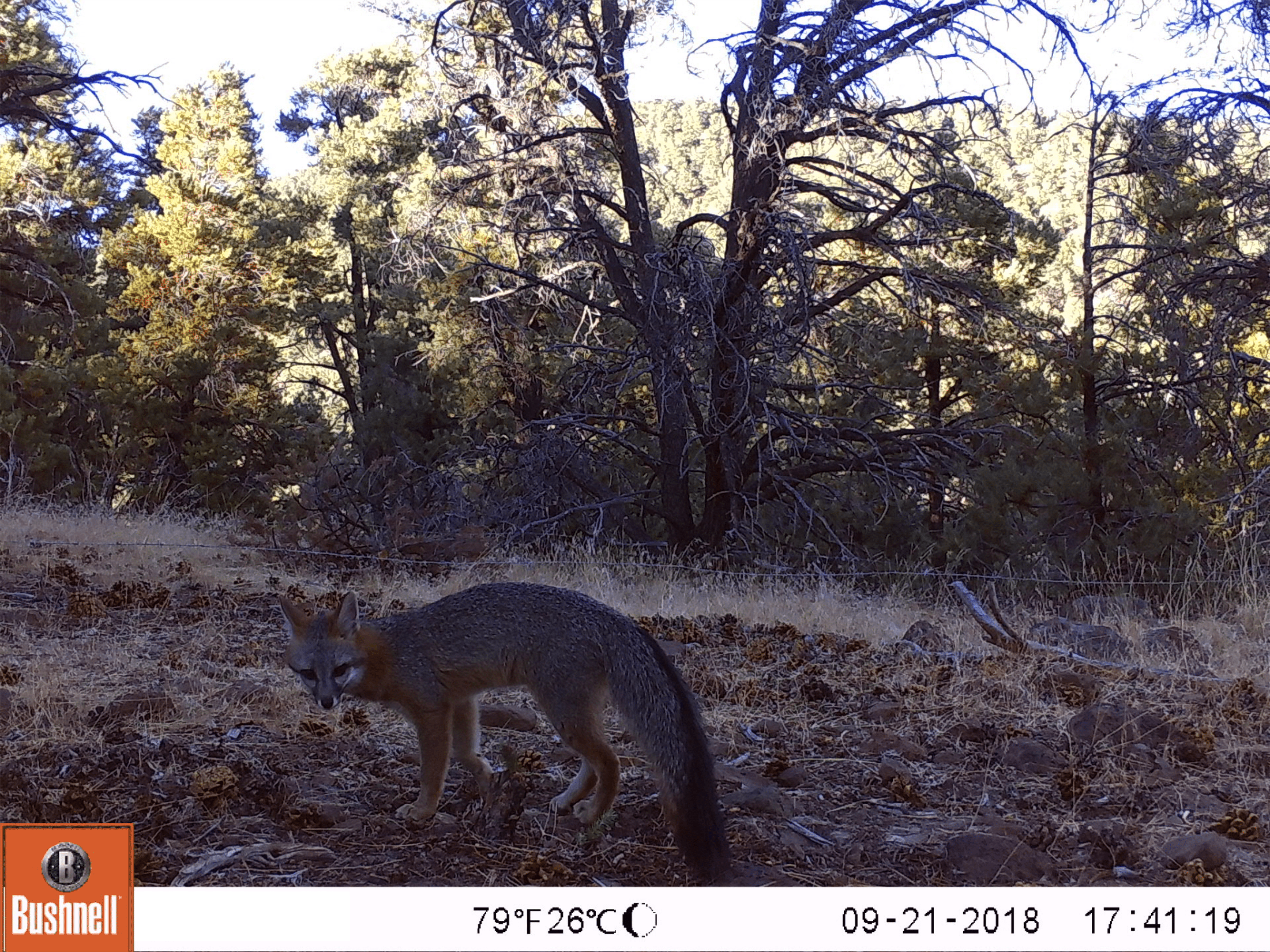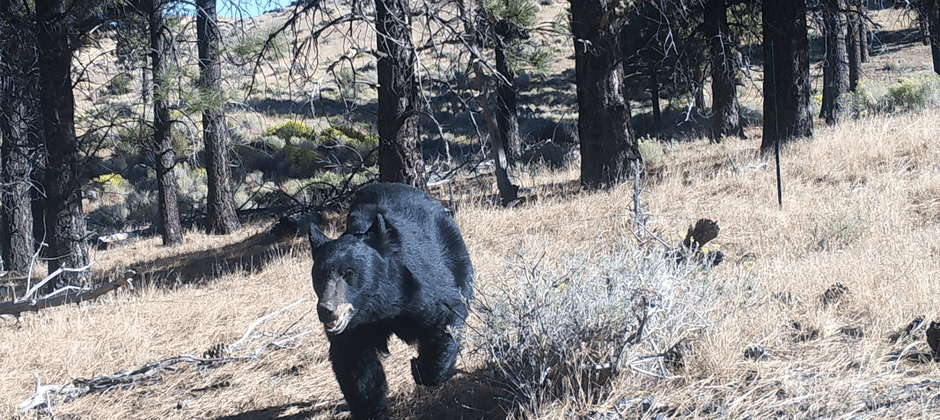Share this article
Bears may protect foxes from coyotes
Black bears in Lake Tahoe may be inadvertently protecting lower-ranking carnivores — gray foxes — from nearby coyotes.
The Nevada Department of Wildlife has funded a project following black bears (Ursus americanus) that are repopulating western Nevada long after they had been nearly extirpated. “Bears from California trickling in over the mountains have augmented a Nevada population that is recolonizing its former range,” said Remington Moll, an assistant professor at the University of New Hampshire.
State biologists wanted a way to monitor and track them. While conducting the research, Moll began to ask more questions about the dynamics of the ecosystem. It already had a large number of carnivore species, with a hierarchy where larger carnivores outcompeted smaller ones. He wondered in particular about coyotes (Canis latrans) and bears.

Some black bears like the one pictured here appear brown due to a common color morph. Credit: Nevada Department of Wildlife
Moll led a study published in Oecologia where he used GPS collars and camera traps to tap into the lives — and pecking order — of these carnivores over 15,000 square kilometers in the Lake Tahoe region.
“It’s a massive challenge to track these types of carnivores, because they don’t like to be found, don’t like to be caught, don’t like to be tracked,” Moll said.
The Nevada Department of Wildlife led the effort to GPS collar the bears. The broader team, consisting of department biologists and researchers from Michigan State University and the University of Montana, also added 100 wildlife cameras to the landscape for a year and noted what animals came by and when. “What we were looking at was the spatial patterns of occurrence of these animals,” he said, “so we could analyze those data and try to make inferences and interpret the patterns.”

Coyotes like the one above take advantage of “free real estate” when black bears go into hibernation for the winter. Credit: Nevada Department of Wildlife
Moll and his colleagues developed a sort of experiment facilitated by the absence of bears when they hibernated during the winter. The researchers found that when black bears were around, gray foxes (Urocyon cinereoargenteus) spent time in the same areas, while coyotes did not. When the bears were hibernating, the coyotes moved in and the foxes dispersed. “Coyotes essentially moved into where the bears used to be,” he said. “Free real estate opened up.”
The team believes this means that gray foxes are sticking closer to the bears during the summer for protection from coyotes. “Coyotes will frequently kill or injure foxes where they overlap,” he said, “so they avoid that situation.”
This is similar to the “landscape of fear” dynamic in predator-prey relations. Prey change their behavior — becoming more vigilant or moving out altogether — to avoid carnivores. The same seems to be true in this hierarchical predation system, Moll said. The next step is seeing if it applies to other areas with multiple carnivores. He hopes the study can help scientists better understand these intricate relationships among carnivores across the hierarchy.

Gray foxes in Lake Tahoe like this one spend time around black bears to protect themselves from coyotes. Credit: Nevada Department of Wildlife
But so far, this information helps scientists know more about the role of apex carnivores in ecosystems. “These roles can be very complex, and we see that here,” he said. “We see that potentially the presence and absence of a top carnivore is helping facilitate these two other species’ coexistences. It potentially allows these two species to coexist whereas otherwise, they might not.”
Header Image:
Black bears like this one inadvertently protect gray foxes during the summer.
Credit: Nevada Department of Wildlife








